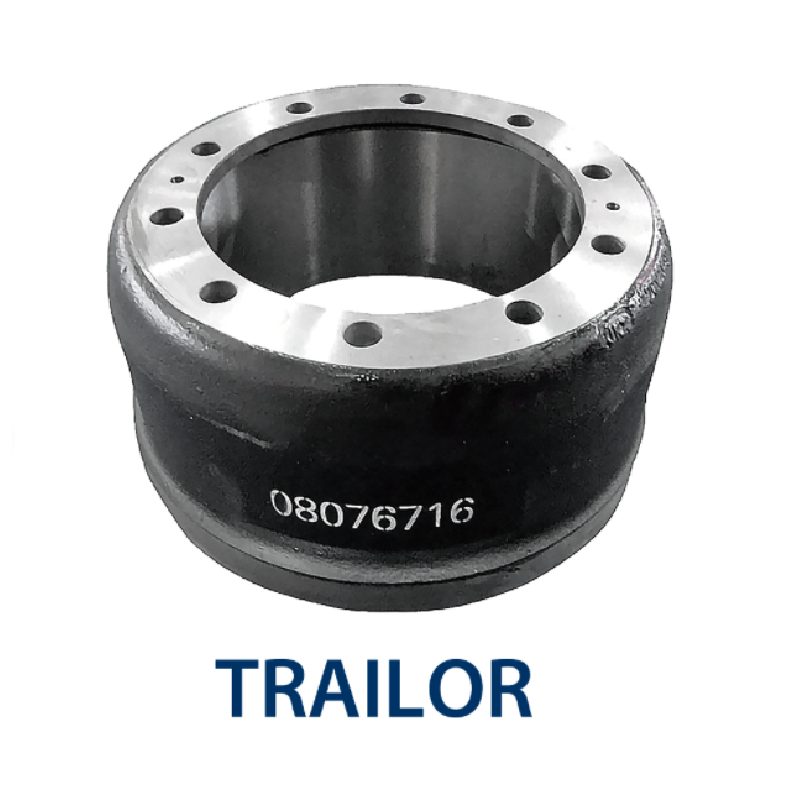Dec . 09, 2024 18:22 Back to list
Comparing Brake Drums and Disc Brakes for Optimal Vehicle Performance and Safety
Brake Drums vs. Brake Discs Understanding the Differences and Their Applications
When it comes to vehicle braking systems, two primary types of components stand out brake drums and brake discs. Both systems serve the vital function of slowing down or stopping a vehicle, but they operate using different mechanics and have unique advantages and disadvantages. In this article, we will explore the key differences between brake drums and brake discs, their applications, and the factors that influence their use in modern vehicles.
Brake Drums The Traditional Choice
Brake drums are a traditional type of braking component that have been used for many decades. They consist of a cylindrical drum that rotates with the wheel. Inside the drum, there are brake shoes lined with friction material. When the driver applies the brakes, hydraulic force pushes the brake shoes outward against the inner surface of the drum, creating friction that slows down the vehicle.
One of the main advantages of brake drums is their ability to provide strong braking force. They are often less expensive to manufacture and maintain compared to brake discs. Additionally, drum brakes tend to perform well in moist conditions, as water can easily drain away from the drum's surface.
However, brake drums are not without their downsides. They can develop heat more quickly, which may lead to brake fade during prolonged use, such as in mountainous driving or heavy towing situations. Drum brakes also tend to be heavier than their disc counterparts, which may lead to slightly reduced fuel efficiency.
Brake Discs The Modern Alternative
Brake discs, also known as rotor brakes, have become increasingly popular in modern vehicles, especially in high-performance and luxury models. The disc brake system consists of a flat, circular disc that rotates with the wheel, and calipers that house brake pads. When the driver presses the brake pedal, hydraulic pressure forces the brake pads against the disc, creating friction.
brake drums vs discs

One of the major advantages of brake discs is their superior cooling capabilities. The exposed design allows heat to dissipate rapidly, reducing the likelihood of brake fade. This makes disc brakes particularly well-suited for high-performance vehicles and heavy-duty applications. Additionally, they provide better stopping power and more consistent performance under various driving conditions.
However, disc brakes tend to be more expensive to manufacture and replace than drum brakes. They may also experience more wear on the brake pads, necessitating more frequent replacements. Furthermore, in certain applications, such as low-speed driving or in areas with heavy rainfall, disc brakes may be more susceptible to corrosion if not properly maintained.
Applications and Trends
Traditionally, drum brakes have been more prevalent on the rear wheels of passenger vehicles, especially in older or budget-friendly models. In contrast, disc brakes are more commonly found on the front wheels due to their higher performance characteristics. However, many automakers have started adopting all-disc braking systems in their vehicles for enhanced safety and performance.
Recent trends indicate an increased focus on electric vehicles (EVs) and hybrid models, where regenerative braking systems are utilized. These systems can incorporate both brake drums and discs, providing optimal efficiency and performance based on the driving conditions.
Conclusion
In conclusion, both brake drums and brake discs have unique benefits and limitations, and their choice depends on various factors, including the vehicle type, intended use, and budget. Brake drums provide a cost-effective solution for many everyday vehicles, while brake discs offer superior performance and cooling, making them a preferred choice for modern, high-performance applications. Understanding these differences can help drivers and automotive enthusiasts choose the best braking system for their specific needs, ultimately ensuring safety and efficiency on the road.
-
Scania Brake Drums: OEM Quality for Optimal Safety & Durability
NewsAug.16,2025
-
R.V.I: Advanced Remote Visual Inspection for Precision
NewsAug.15,2025
-
Discover HYUNDA: Innovative Vehicles, Equipment & Solutions
NewsAug.14,2025
-
R.V.I: Unlock Advanced Insights & Real-time Performance
NewsAug.13,2025
-
Kamaz Brake Drum: Durable & Reliable for Heavy Duty Trucks
NewsAug.12,2025
-
Heavy Duty Iveco Brake Drum - Premium Quality & Safety
NewsAug.11,2025
